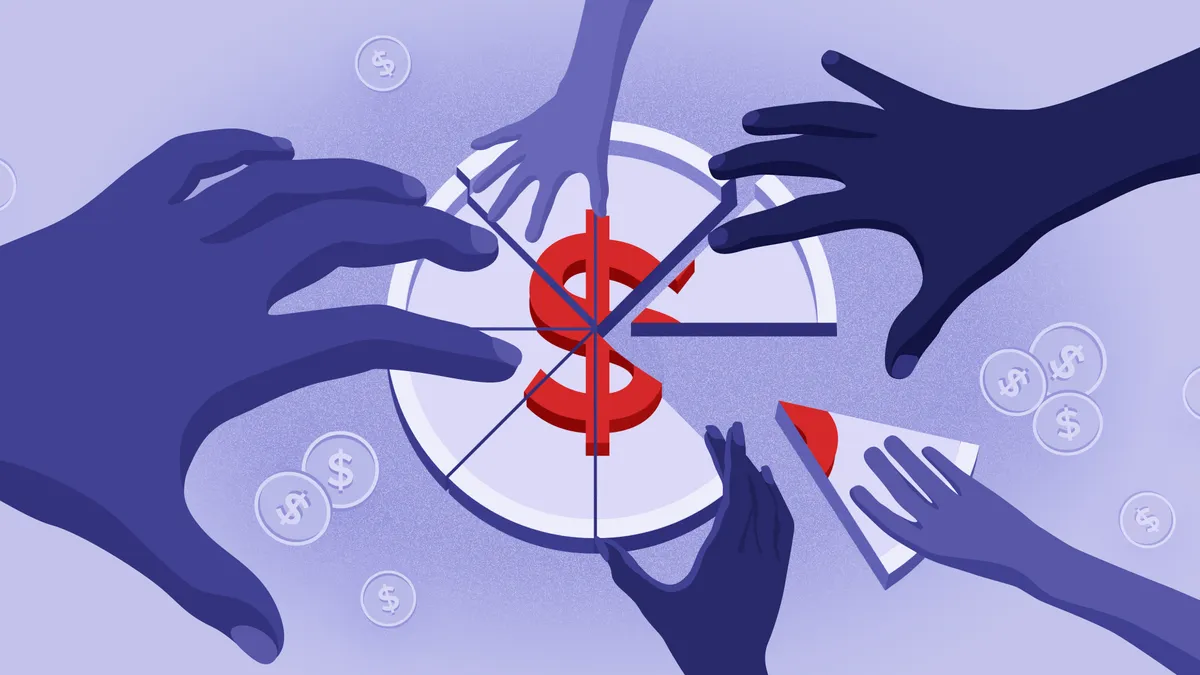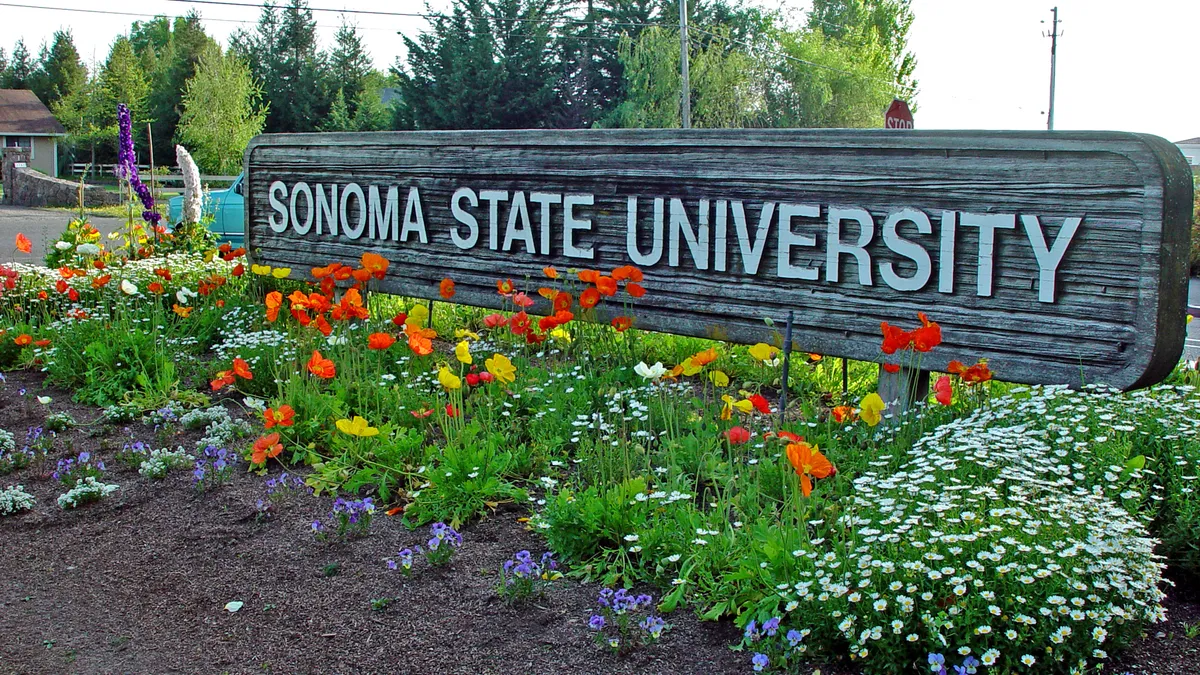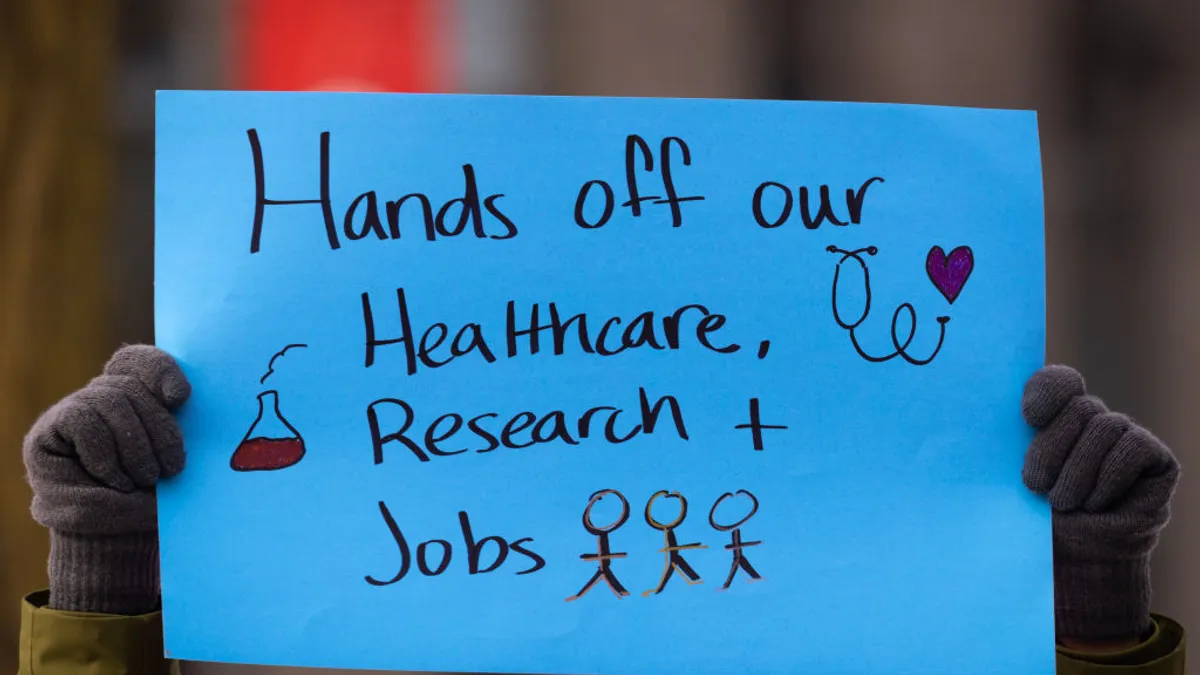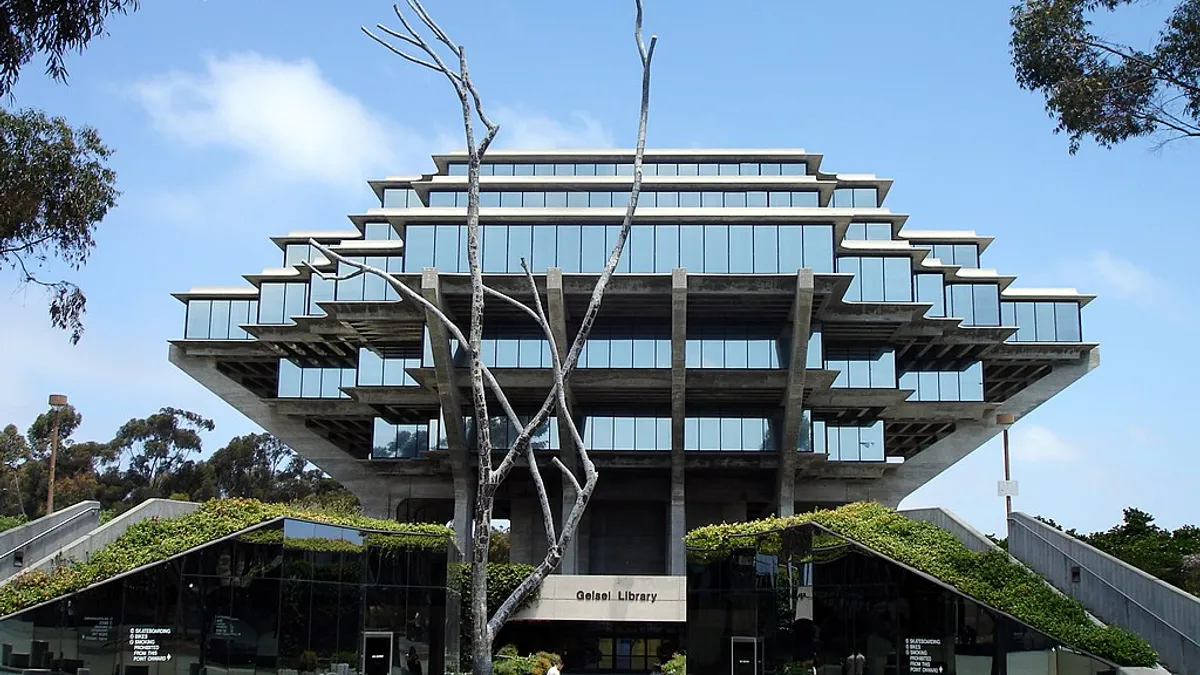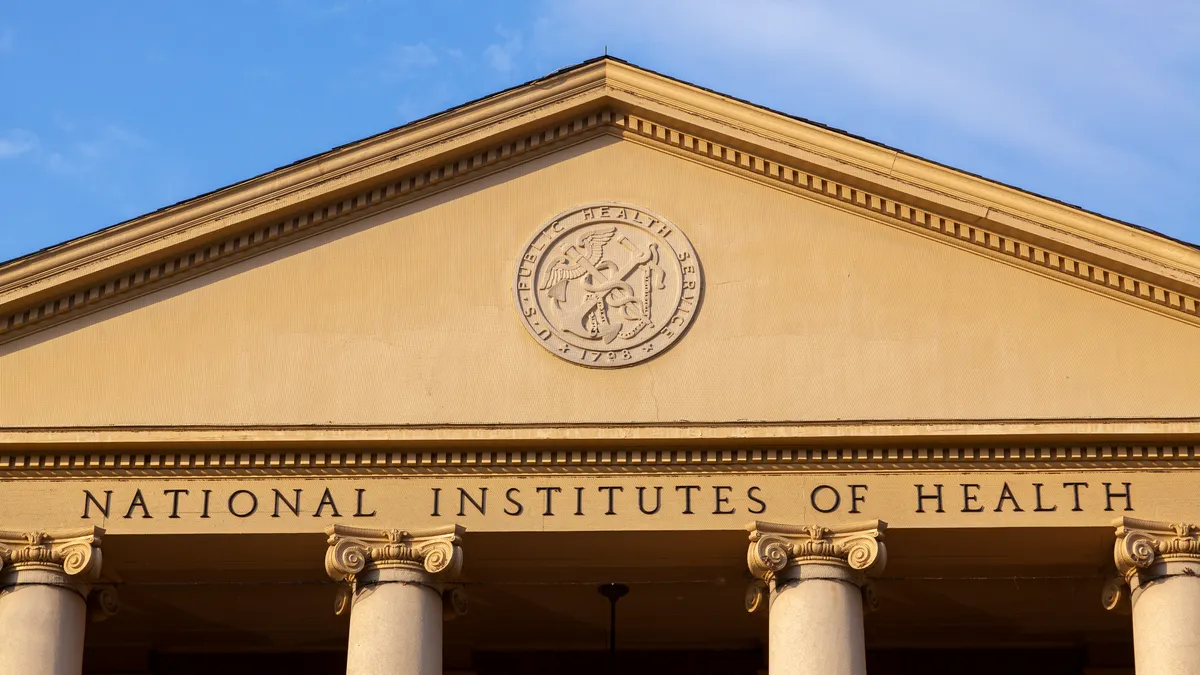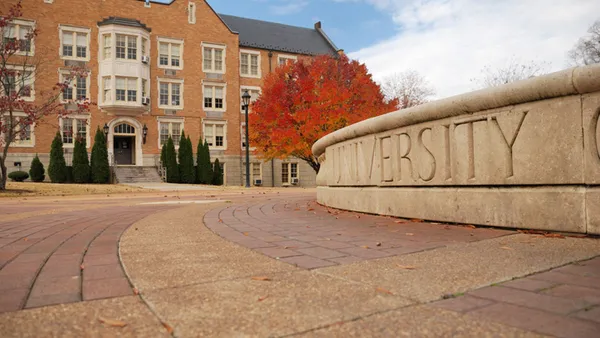The coronavirus pandemic is taking a heavy toll on colleges' financials, and higher education groups say the sector will need billions of dollars to weather the crisis. The Paycheck Protection Program (PPP), a federal lending initiative meant to help small businesses keep their employees on the payroll, offered some of that desired relief to colleges.
Institutions with 500 or fewer employees could borrow up to $10 million through the program. With a few exceptions, they qualify for full or partial loan forgiveness if they spend at least 60% of the amount they receive on payroll expenses and strive to keep their workers employed.
To learn how PPP is impacting the higher ed sector, Education Dive analyzed data from the U.S. Small Business Administration (SBA) to identify which nonprofit institutions are participating in the program. We found that at least 782 nonprofit two- and four-year institutions or their affiliated entities received a loan between $150,000 and $10 million. A searchable breakdown of which colleges received loans is available here.
However, this is likely an undercount. Our analysis includes any nonprofit college that filed for a loan under the categories for junior colleges as well as colleges, universities and professional schools, but some institutions could have received loans under a different category. We also excluded any school we couldn't match to the database of institutions in the Integrated Postsecondary Education Data System.
Moreover, the SBA published loan-level data on July 6 for businesses that received at least $150,000. The program ended Aug. 8, so other institutions could have received funding during that window. It also published state-level data for borrowers that received less than $150,000, but we did not include them in our analysis.
Most higher ed PPP loans went to colleges
| Colleges | 679 |
| Affiliated organizations | 103 |
| Foundations | 57 |
| Auxiliary Groups | 22 |
| Alumni Associations | 12 |
| Student services | 9 |
| Other | 3 |
Despite these caveats, the data shows that a wide variety of institutions benefited from the program, including entities tied to large universities.
However, four year, private liberal arts schools — such as Mills, Hampshire and Wesleyan colleges — as well as dozens of theological seminaries and Christian institutions dominate our list. Our analysis also includes 66 institutions that primarily offer two-year programs, though some also grant bachelor's degrees; we counted them as two-year schools.
The pandemic presents an acute challenge for liberal arts colleges and other small schools. They typically rely heavily on tuition revenue, which is under threat as students question whether they should attend college during the pandemic. Moreover, many residential colleges refunded students' housing costs when they closed their campuses in the spring and will forgo this income again if they continue remote instruction or have fewer students on campus in the fall.
PPP stands to help these institutions by loaning money for their payroll expenses, as well as costs such as rent and utility payments.
"As we increasingly see reports of institutions having to resort to layoffs and furloughs, this might be sort of an avenue for a smaller institution to get support," said Elizabeth Banes, an analyst at Ithaka S+R.
2-year institutions tended to receive smaller loans than 4-year schools
Who else is benefiting?
Still, small liberal arts colleges aren't the only ones to benefit from PPP. We identified more than 100 entities affiliated with nonprofit schools, including college foundations, alumni associations and auxiliary organizations that run critical campus services.
Some of these entities are linked to public flagships, such as the University of Virginia (UVA) and Louisiana State University (LSU). And many of the auxiliary organizations are tied to medium- and large-sized public institutions, including several in the State University of New York and California State University systems. You can find a searchable list of those institutions here.
Overall, at least 50 college and university foundations received PPP loans. This is also likely an undercount, though we looked at those that received funding under several categories other than those explicitly for colleges.
Foundations that applied for the funding were likely to be smaller, have no operating revenues to fall back on and be responsible for their own payroll, rather than having workers paid by the state, said George Watt, senior fellow at the Association of Governing Boards of Universities and Colleges.
Foundations can also own property for their institutions, such as residence halls. In those cases, the PPP loans could pay for some buildings' expenses, potentially helping institutions that refunded housing.

But university foundations are each unique, so how they use PPP loans could vary. "If you've seen one public university foundation, you've seen one public university foundation," Watt said.
In some cases, public universities are tied to more than one entity that received a PPP loan. For example, we found five foundations affiliated with the University of Virginia that are participating in the program.
Out of 10 foundations or auxiliary organizations contacted by Education Dive, four shared how they are using their loans. A spokesperson for the LSU Foundation said it "faced both immediate and long-term financial impacts" from the pandemic, and that the PPP loan it received "was critical in mitigating the immediate impact on fulfilling our mission" and maintaining job security for its team members. The University Corporation, an auxiliary organization serving San Francisco State, said it received around $538,000 to mostly cover payroll expenses.
Meanwhile, the University of Virginia Foundation said it received about $2.7 million through its subsidiary, UVA Host Properties, which owns a Boar's Head Resort. The funds were used to support its operations when business was limited or shut down because of the pandemic, a foundation spokesperson said.
UVA didn't apply for any PPP loans, and it had no role in its associated organizations doing so, university spokesperson Wesley Hester wrote in an email. Hester noted that the entities have separate financial and governance structures. "The University will not directly benefit from those loans, though UVA indirectly benefits from the foundations remaining operationally sound as they do raise funds for professorships and scholarships and manage UVA-affiliated operations," Hester said.
These organizations' affiliated universities are also likely reeling from the pandemic. "When we're looking just at basic numbers for large research institutions, they're comparatively losing more or absorbing greater costs" than smaller colleges, said Megan Schneider, senior director of government affairs at the National Association of College and University Business Officers (NACUBO).
Foundations and auxiliary groups have their own operating budgets and don't have access to their affiliated institutions' funds, higher ed experts said.
According to our analysis, the SBA's data shows that nonprofit colleges requesting larger loans tended to have more "jobs retained," which can be used as a proxy for employee totals, though media reports have noted some of this data appears erroneous. By our count, 75% of colleges reporting 401 to 500 jobs retained received a loan between $2 million and $5 million, compared to just 2% of colleges reporting 100 or fewer jobs retained.
Colleges that got bigger loans tended to report more jobs retained
More aid coming?
PPP excludes large swaths of the higher ed sector, however.
Colleges were originally required to count all student-workers as employees when applying for the loans. Although an exception was carved out for Federal Work-Study students, many colleges were still over the threshold because they employ students in exchange for tuition assistance.
Higher ed groups have fought these requirements and advocated for the SBA to lift the threshold for colleges because they can be major employers in their communities.
Colleges are looking ahead to a new wave of federal relief. The American Council on Education, higher ed's top lobbying group, expects institutions will need more than $120 billion to make it through the pandemic.
Earlier this year, Congress allocated $14 billion to colleges through the Coronavirus Aid, Relief, and Economic Security Act. But around half of that went to students in the form of emergency relief aid, and it's unclear how much more money lawmakers will give the sector.
Republicans and Democrats have asked for vastly different amounts. Sens. Patty Murray, D-Wash., and Chuck Schumer, D-N.Y., led a contingent of Democratic lawmakers in pitching a $430 billion education and child care package that would include $132 billion to help colleges. Meanwhile, Senate Republicans proposed around $30 billion for higher ed.
"They are hurting massively right now," NACUBO's Schneider said. "The $14 billion was absolutely appreciated, but for most institutions out there, their ... allotment was a drop in the bucket of their expenses."



